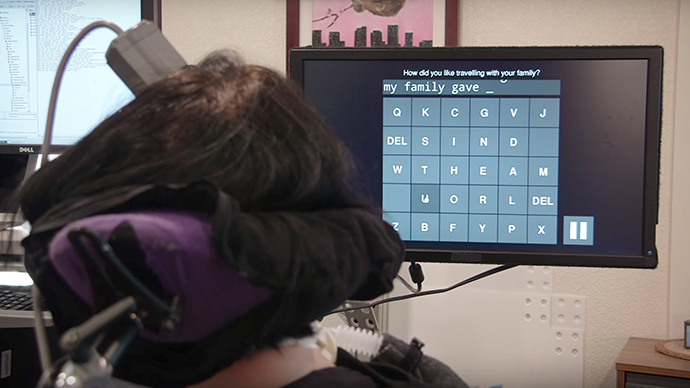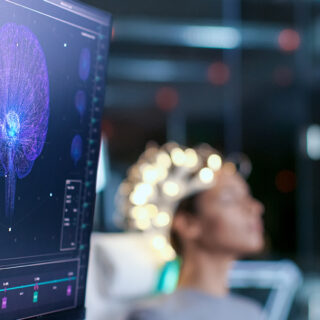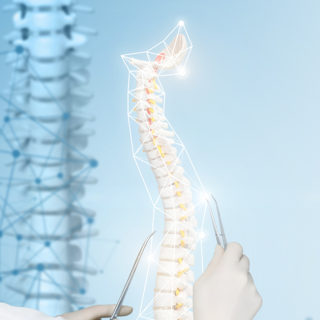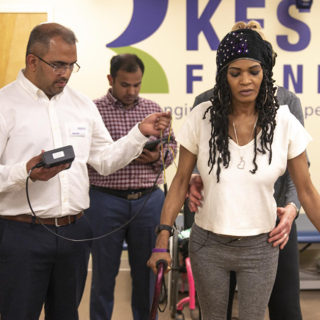Paralysis can be caused by injury, illness and poisoning (in rare cases). The challenges posed by paralysis are many and may include the loss of mobility and the loss of feeling in parts or most of the body. Although it is most evident in the muscles themselves, paralysis is caused by problems with the nerves or spinal cord that the brain uses to control muscles.
Injuries to the spinal cord fall broadly into two categories: complete and incomplete Spinal Cord Injuries (SCI). A complete injury refers to a total loss of sensory or motor function below the level of injury. An incomplete SCI refers to damage to the spinal cord that is not complete and where some motor or sensory functions remain. The degree of feeling and movement will obviously vary from patient to patient and depends quite heavily on the extent of the spinal injury.
Paralysis may appear suddenly, for example when it is caused by an injury, or gradually when it is the result of disease. One such disease that causes paralysis is Amyotrophic Lateral Sclerosis or ALS in short. It is also known as Lou Gehrig’s disease and occurs as a result of damage to the nerve cells which are responsible for controlling voluntary muscle movement. The disease is progressive and this inability to control our muscles worsens with time with paralysis being the eventual result.
As we have seen, the major challenges posed by paralysis are, generally speaking, the loss of movement and the loss of feeling. The former may, to some extent, be mitigated by the use of walking devices where the injury is not so severe, or motorised wheelchairs where the injury is quite serious.
A recent study conducted by Stanford University has resulted in a major scientific breakthrough. The study involved three participants, two with progressive paralysis brought on by ALS and one with an SCI. All three had what was described as ‘severe limb movement’. The participants had tiny electrode arrays installed in their brains. The purpose of these electrode arrays was to record signals from the motor cortex. This is the region in the brain that controls muscle movement. Through a cable, these signals were then sent to a computer where they were translated by algorithms into point-and-click commands. By imagining their own hand movements, all the participants were able to guide an onscreen cursor to characters on an onscreen keyboard to engage in fast, accurate typing.
The implications of this new development are staggering. For one thing people living with paralysis and whose work mainly involves the use of a computer need not see their livelihoods vanish. An important measure of independence does not just involve mobility but also the ability to discharge other duties without the over reliance on the assistance of others.
Medical advances on all fields normally have a two-fold purpose: to improve the quality of life of patients by lessening the severity of symptoms and bringing back a patient to robust health by effecting a gradual cure. This point-and-click approach is expected to be extended to other computing devices such as smart phones and tablets. In the future, the effects of neurological diseases and injuries will be greatly mitigated by these advances in medical science and will use intuitive and flexible interfaces that will hopefully result in improved mobility, communication and a restoration of independence for patients.
Although this is a crucial step in handling neurological disorders, it is by no means the first ground-breaking advance in this field. Functions affected by SCI, including cardiovascular and other autonomic nervous system functions (breathing, digestive processes, etc) can be greatly enhanced through the use of Epidural Stimulation. The Epidural Stimulation device activates nerve circuits in the spinal cord through the process of imitating brain nerve signals. This device is implanted surgically and is connected to the nerve systems. Its purpose is not to manage pain or to stimulate muscles.
The device is implanted over the spinal cord’s protective coating. It works by applying a continuous electrical current to defined locations of the lumbar spinal cord. The patient is taught how to control the device which activates limb movements. Impulses that would normally originate in the brain activate the spinal cord nerve circuitry through direct manipulation by the user. When switched on the stimulator commands effectively bypass the side with the injury and facilitate the voluntary movements which have been curtailed by disease as well as allowing other secondary movements.
There is a very detailed process of rehabilitation, and which may take up to 40 days, where the patient is taught how to operate the device (coordinating brain, muscle and nerve function) and eventually create seamless voluntary movements while the device is on. Contact us to learn more about Epidural Stimulation and how it could help bring a powerful change in the life of a loved one.
H/T: Stanford Medicine














